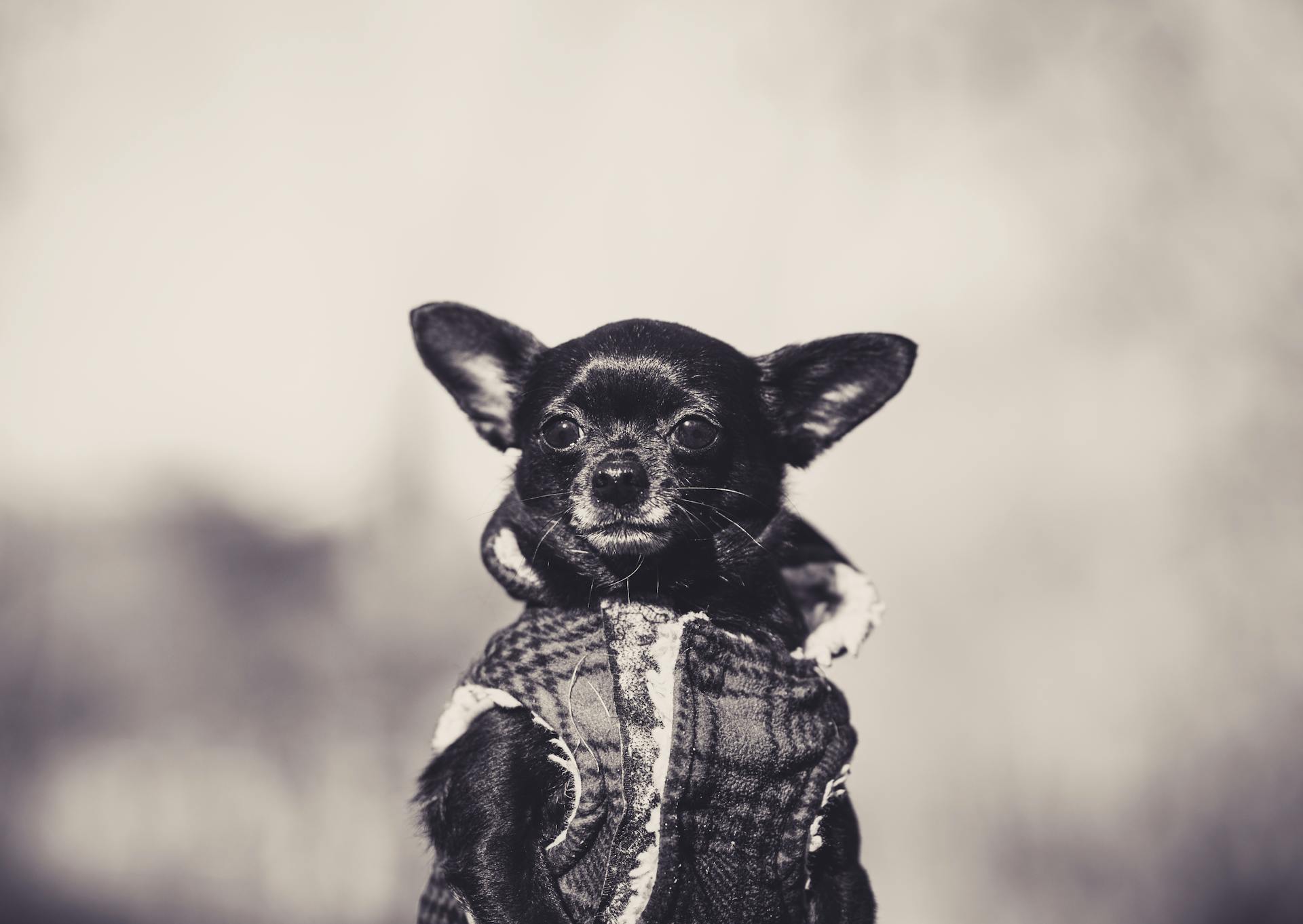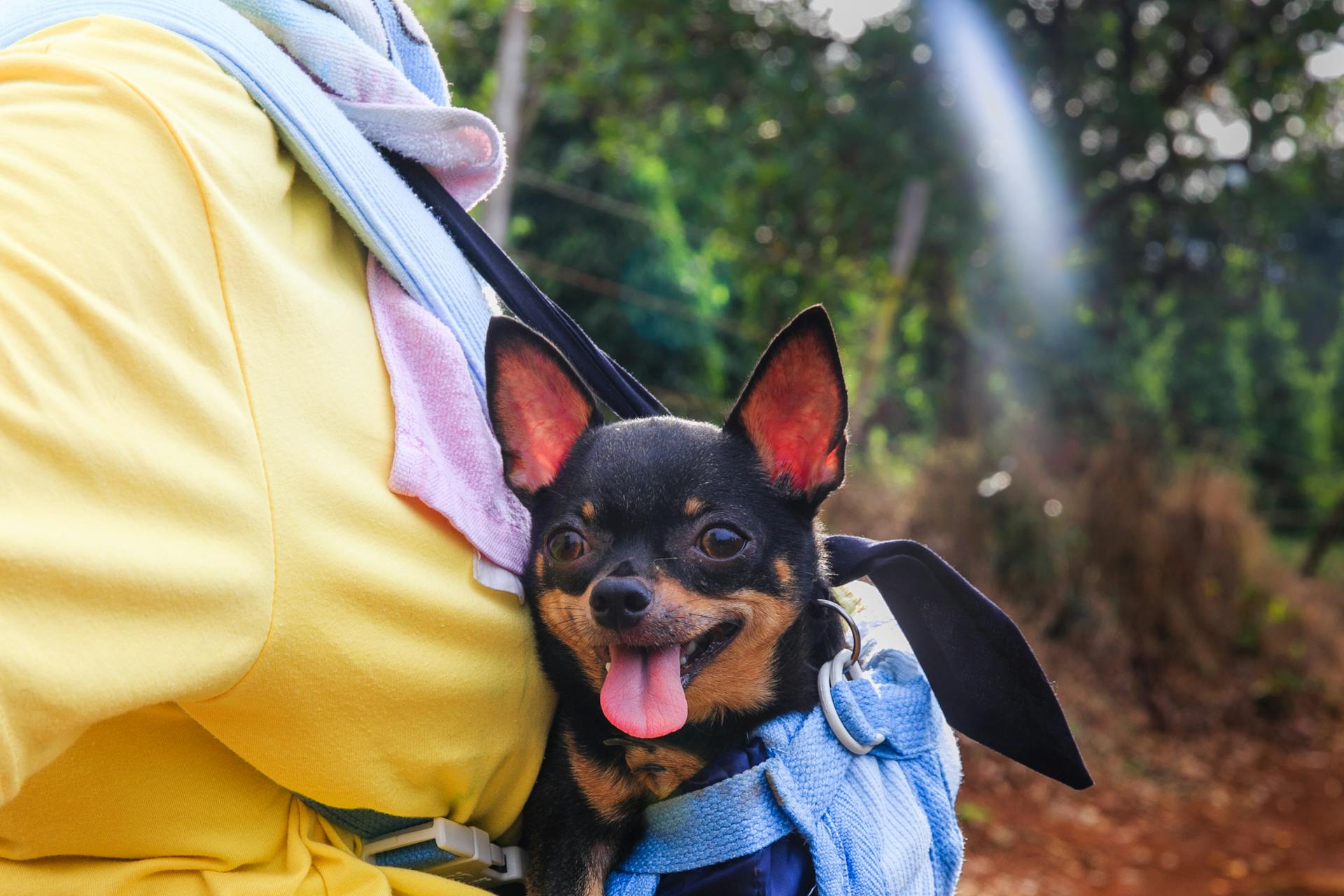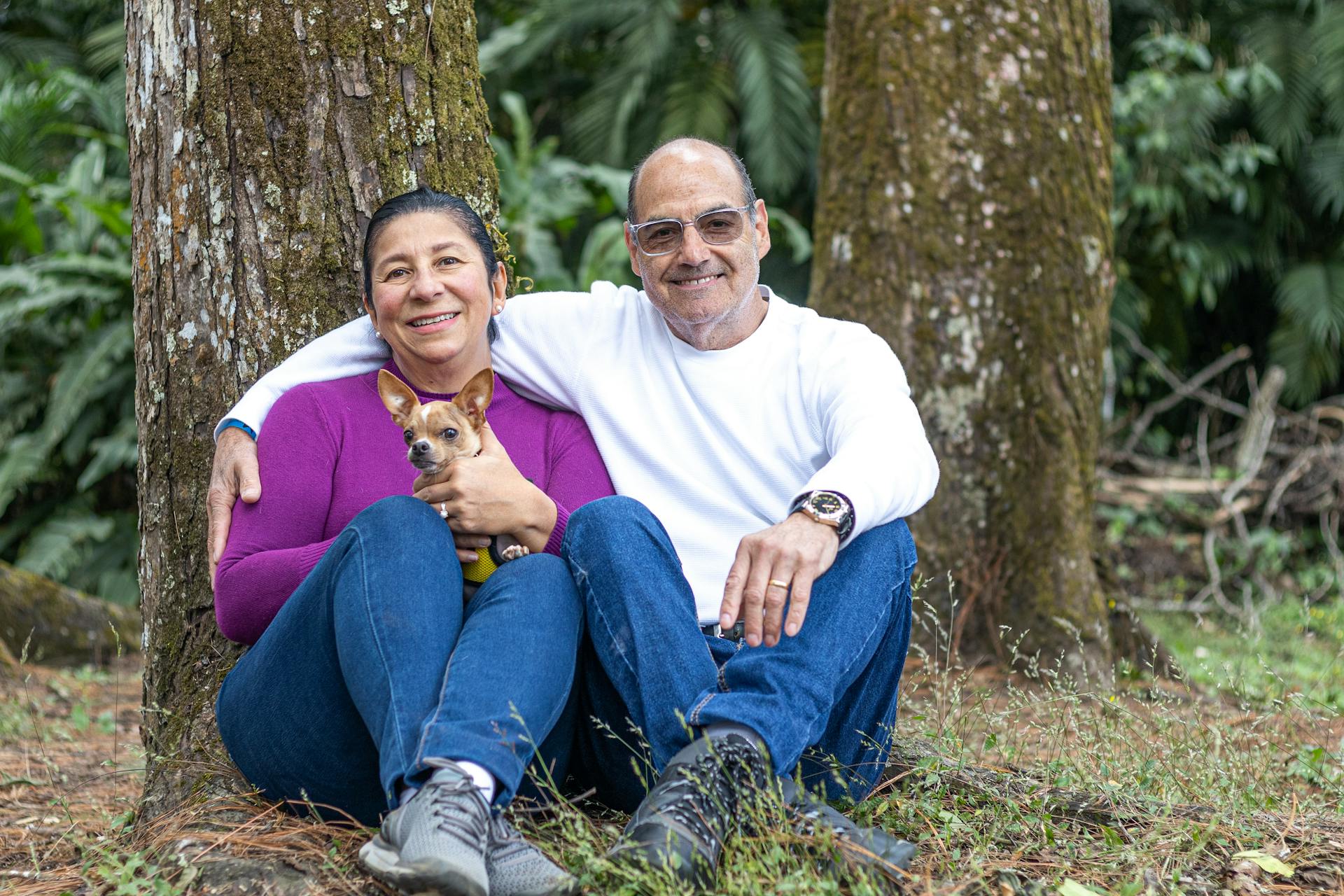
Chihuahuas are one of the smallest dog breeds, weighing between 2-8 pounds and standing about 6-10 inches tall at the shoulder.
Their small size is due to their ancestry from the Techichi, an ancient Mexican dog breed that was often buried with its owners to provide companionship in the afterlife.
Chihuahuas are known for their large eyes, which can be brown, blue, or a combination of both, and their erect ears that are often erect and pointed.
Their coats can be short or long, and come in a variety of colors, including fawn, black, blue, and merle.
See what others are reading: How Often Can You Put Flea Medicine on a Dog
Breed History
The Chihuahua breed has a rich and mysterious history that dates back to ancient civilizations. The origins of the Chihuahua are unclear, but one theory suggests they descended from a Central or South American dog known as the Techichi.
Toltec carvings from the 9th century C.E. depict a dog resembling the Chihuahua, with the same large ears and round head, and were called Techichi. The Techichi played an important role in both the Toltec and Aztec cultures.
The Aztecs believed the Techichi had mystic powers, including the ability to see the future, heal the sick, and safely guide the souls of the dead to the underworld. They used the Techichi in rituals and as a source of food and pelts.
The Chihuahua was discovered in the 1850s in the Mexican state of Chihuahua, from which it took its name. American visitors to Mexico brought the little dogs home with them.
The breed was first shown in 1890, and a Chihuahua named Midget became the first of its breed to be registered with the American Kennel Club in 1904.
Readers also liked: Boarding Dog for First Time
Physical Characteristics
Chihuahuas come in two main types: apple head and deer head. The apple head type adheres to AKC standards.
The apple head Chihuahua has a well-rounded, apple-shaped skull, while the deer head type has a longer, deer-like head with a more gradual slope where the muzzle joins the forehead.
Explore further: How Long Do Apple Head Chihuahuas Live
Deer head Chihuahuas typically have longer legs, larger ears, and tend to be larger in size.
A Chihuahua's ears are large, erect and upright when alert, with a little more space between them when relaxed. Their ears go down when fearful or submissive.
Their eyes are round and dark, with some being lighter in color.
A Chihuahua's tail is set high and tapers as it reaches the tip, and is generally carried high and in a curved or semi-circular shape.
Here are the different types of Chihuahua coats:
Size
When considering a Chihuahua's size, it's essential to know that they typically weigh between 3 to 6 pounds.
Chihuahuas can also be oversize, with some reaching 12 or more pounds.
These larger Chihuahuas can be a great choice for families with children.
Appearance
The Chihuahua's appearance is truly one of a kind. Their head is shaped like an apple, with erect, expressive ears and large, luminous eyes.
One of the most distinctive features of the Chihuahua is their coat, which comes in two varieties: smooth-haired and long-haired. The smooth-haired Chihuahua's coat is short, smooth, and glossy, while the long-haired Chihuahua's coat is silky and either smooth or slightly wavy.
Their ears are large and erect, but when relaxed, they have a bit more space between them. Their eyes are round and dark, with some being lighter in color.
The Chihuahua's nose is black or the same color as their coat in blonds, reds, blues, and chocolates. In blonds or other mostly light-colored Chihuahuas, the nose might be pink or tan.
The Chihuahua comes in two coat types: smooth coat (smooth-haired) and long coat (long-haired). The smooth coat is short, close, and glossy with a ruff on the neck, while the long coat is flat or wavy with a soft texture, an undercoat, and "pants" on their hind legs.
Their coat color is truly diverse, with nearly 30 possible colors and combinations, including black, blue and tan, chocolate, cream, fawn, and white, red, and more. Chihuahuas can be solid, marked, brindled, sabled, or splashed.
A Chihuahua's tail is set high and tapers as it reaches the tip. The carriage of the tail is an important trait – it's generally carried high and in a curved or semi-circular shape.
Here are the different types of markings recognized by the American Kennel Club:
- solid
- marked
- brindled
- sabled
- splashed
Personality and Temperament
Chihuahuas are often described as being terrier-like in their bold and confident nature. They make excellent watchdogs due to their alertness and suspicion of strangers.
Chihuahuas thrive on affection and companionship, and they tend to bond closely with one or two people. They'll show those people great affection.
If not properly socialized, Chihuahuas can be apprehensive and nervous around strangers or other dogs and pets. This may result in barking or even snapping when the dog feels anxious or threatened.
Chihuahuas can do well around children as long as kids aren't too rambunctious and are mindful not to scare these little pups. Very young children may struggle to keep their energy levels and movements subdued enough to make a Chihuahua feel safe.
House-breaking Chihuahuas can sometimes be challenging, requiring patience and more frequent potty breaks. Some Chihuahuas can be trained to use indoor potty areas.
Chihuahuas love to snooze on laps and cuddle, and they're quite portable, but they still need to learn how to walk on their own and engage in normal dog behaviors like sniffing and exploring.
Additional reading: Are Dachshunds Hard to Potty Train
To help your Chihuahua puppy overcome a nipping or protective tendency, socialize them by safely and slowly introducing them to new people and places from the get-go and start training when they are young. Early training will also help this smallest of dog breeds become wonderfully friendly and receptive to all members of the family, including other pets.
If this caught your attention, see: Training a Dog to Protect
Health and Care
Chihuahuas are people dogs and need regular exercise to stay happy and healthy. They enjoy walks, supervised romps around the yard, and retrieving toys, and will go until they drop, so it's essential to ensure they don't tire themselves out, especially on hot days.
They should never live outside, as they're not safe from predators like hawks, coyotes, or larger dogs that could enter your yard. Crate training is a great way to ensure they don't get into things they shouldn't, like destructive chewing or getting into trouble.
Crate training at a young age will also help your Chihuahua accept confinement if he ever needs to be boarded or hospitalized. Be sure to crate them for short periods, like a few hours at a time, and not as a substitute for proper training and socialization.
Recommended read: Medical Alert Dog Training
Health
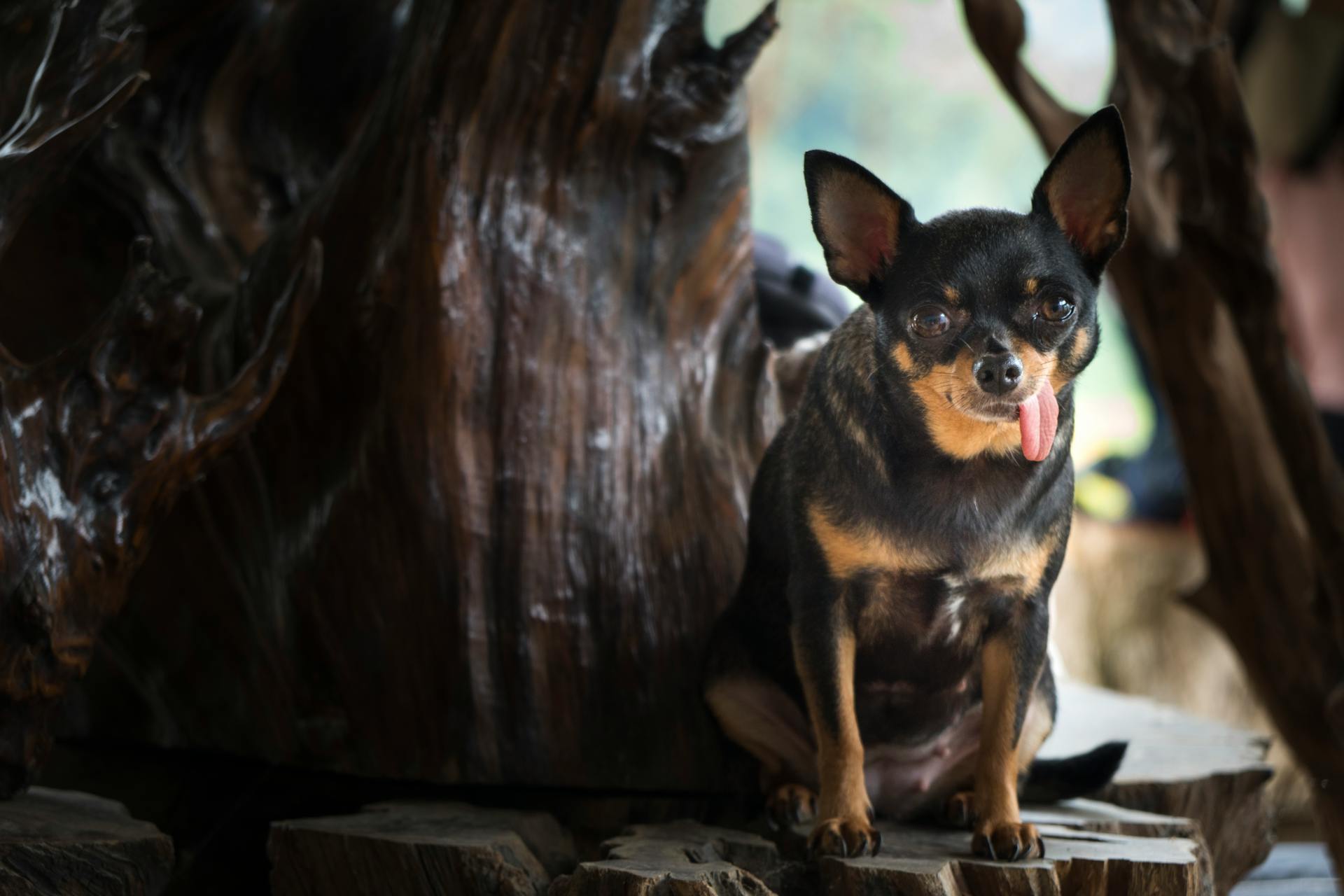
Chihuahua owners should be aware of the potential health risks associated with their beloved pets. Chondrodystrophy (CDDY) is a skeletal disorder that can cause shortened limbs and disc herniation in Chihuahuas.
Knowing the genetic health conditions that can affect your Chihuahua is crucial for planning their lifelong care. Neuronal Ceroid Lipofuscinosis 7 (NCL7) is a progressive disease that can impact your Chihuahua's behavior, movement, and vision.
Chihuahuas at risk for these conditions can suffer from epileptic seizures in later stages. This highlights the importance of genetic testing to identify potential health issues early on.
If you're concerned about your Chihuahua's health, consider genetic testing with Wisdom Panel™ Premium, which offers results for over 200 genetic health tests.
Expand your knowledge: Common Health Problems with Chihuahuas
Care
Chihuahuas need daily exercise, which can be surprising given their small size. They'll happily chase squirrels in the backyard and play as long as you do.
They enjoy walks, supervised romps around the yard, and retrieving toys, but it's essential to ensure they don't tire themselves out, especially on hot days. This means you'll need to keep a close eye on them.
Discover more: How Much Exercise Do Chihuahuas Need
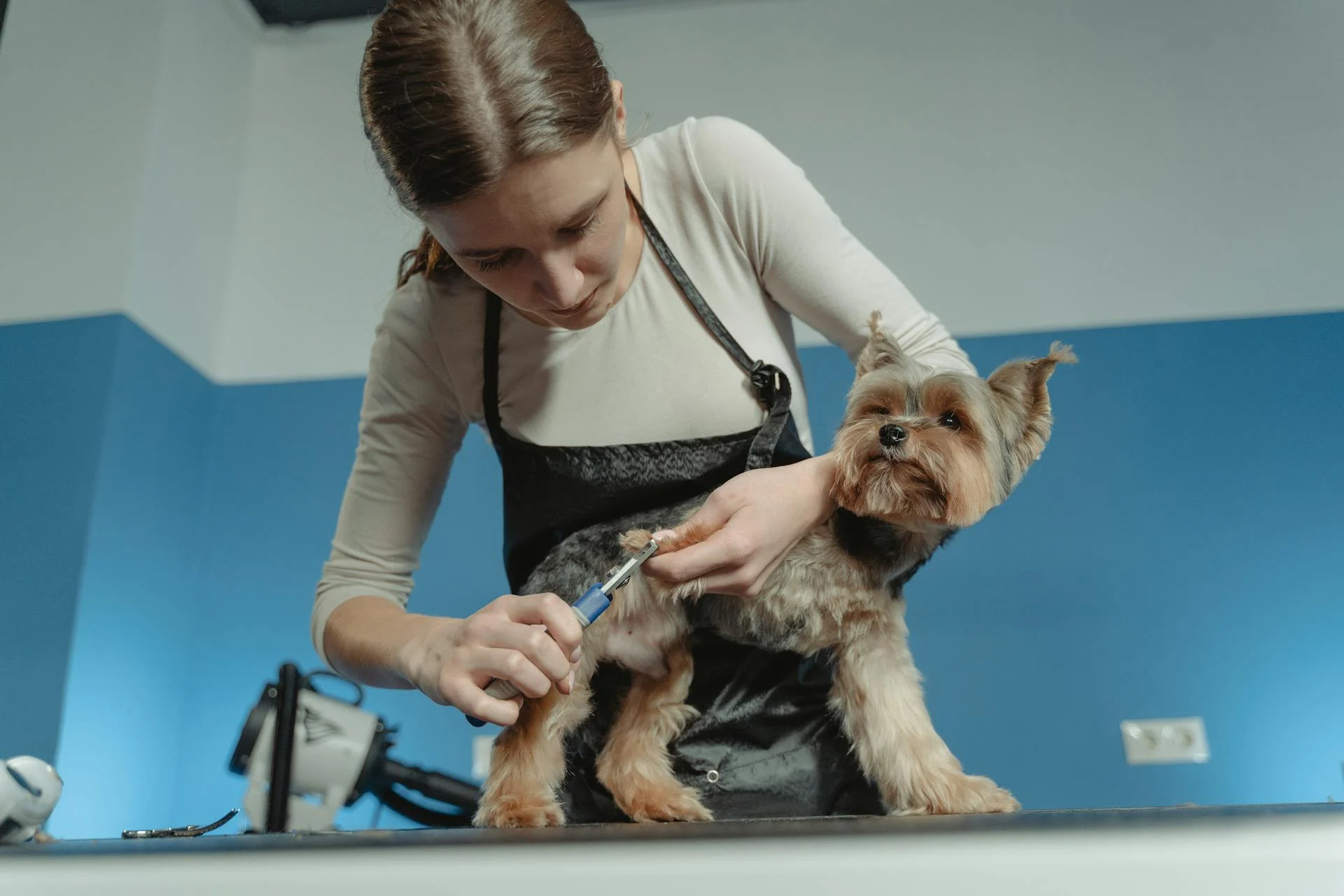
Chihuahuas should never live outside, as they're not safe from predators like hawks, coyotes, or other larger dogs that could enter your yard. They're bred as companions, and the best place for them is with you.
Training a Chihuahua can be an enjoyable task, and they're successful in dog sports like agility and obedience. They're also easy to housetrain if you take them out frequently and on a consistent schedule.
Using a crate to confine them when you're unable to supervise them will teach them to control their bladder and prevent accidents in the house. Crate training at a young age will also help your Chihuahua accept confinement if needed.
Chihuahuas require regular grooming, especially for their dental and eye care. They're smart dogs who take well to proper training and socialization, making them a joy to care for.
Readers also liked: Cockapoo Care
Nutrition and Feeding
Chihuahuas need more calories per pound of bodyweight than larger dogs, so it's essential to feed them a diet that meets their specific needs.
A highly active Chihuahua will need more food than a couch potato dog, and the quality of dog food you buy also makes a difference.
Feed your Chihuahua several small meals throughout the day to fulfill their caloric requirements, as their small stomachs don't allow them to eat large meals.
Even a couple of extra treats can add up and lead to weight gain in Chihuahuas, so be careful not to overfeed them.
A 6-pound dog, ideally, should receive about 225 calories per day, including treats, and a common problem with very small dogs is overfeeding.
Look for a statement on the dog food package that says it meets nutritional standards established by the Association of American Feed Control Officials (AAFCO) to ensure it's a high-quality food.
A smaller-sized kibble is best for Chihuahuas, as it fits in their smaller mouths and allows them to properly chew and digest their food.
It's best to talk to your veterinarian to determine the best food, portion size, and feeding schedule for your Chihuahua based on their individual weight, activity level, and age.
Related reading: Good Dog Treats Human Food
Frequently Asked Questions
What not to do with a Chihuahua?
To keep your Chihuahua safe and healthy, avoid ignoring signs of aggression and provide regular exercise beyond indoor play. Also, take precautions with their water and furniture habits to prevent potential harm.
What are Chihuahuas best known for?
Chihuahuas are known for their small size and distinctive features, including big round eyes. Their unique appearance is just the beginning of what makes this breed so fascinating.
Featured Images: pexels.com
